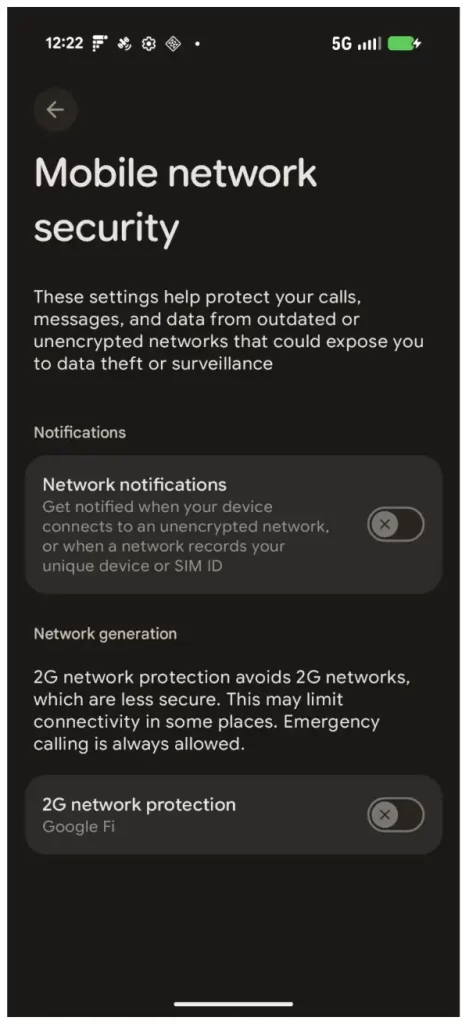Android 16 is rolling out a new security feature to help users detect and guard against sophisticated surveillance tactics, such as those involving fake cell towers—commonly known as “stingrays.” These devices mimic legitimate cell towers, tricking phones into connecting so attackers can collect sensitive data like device identifiers (IMEI, IMSI) and even intercept unencrypted calls and messages.
The latest Android update introduces a dedicated “Mobile network security” section within the Safety Center (Settings > Security & privacy). This section contains two key toggles:

- Network notifications: When enabled, this feature alerts users if their device connects to an unencrypted network or if the network requests their phone’s unique identifiers. These notifications appear in the notification panel and the Safety Center, allowing users to take action if suspicious activity is detected.
- 2G network protection: This toggle lets users disable 2G connectivity, which is less secure and often targeted by stingray devices.

These features require modem hardware that supports the latest Android IRadio HAL (version 3.0), so they will only be available on new devices launching with Android 16, such as the upcoming Pixel 10. Current devices, even those updated to Android 16, will not support these notifications due to hardware limitations.
By alerting users to potential surveillance and giving them more control over network connections, Android 16 takes a significant step forward in protecting mobile privacy against advanced threats.






